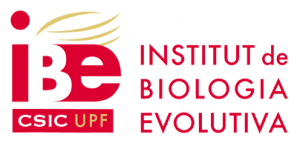I am Johannes Engelken and as an  evolutionary biologist, I like to use whatever methodology it takes to answer interesting scientific questions. Currently I am working on the evolution and possible adaptation of human trace element homeostasis in response to the environment. I mainly use bioinformatic tools from the fields of population genetics, phylogenetics and statistics in combination with public or in-house generated molecular data. Essential trace element are micronutrients that play important roles in human physiology and health. Deficiency of zinc, as an example, is known both from agriculture and from human health records in Turkey, implying that the deficiency is passed on through the food chain. I have combined innovative population genomic analyses with functional approaches to identify genes that may have contributed to human adaptation to local micronutrient deficiencies.
evolutionary biologist, I like to use whatever methodology it takes to answer interesting scientific questions. Currently I am working on the evolution and possible adaptation of human trace element homeostasis in response to the environment. I mainly use bioinformatic tools from the fields of population genetics, phylogenetics and statistics in combination with public or in-house generated molecular data. Essential trace element are micronutrients that play important roles in human physiology and health. Deficiency of zinc, as an example, is known both from agriculture and from human health records in Turkey, implying that the deficiency is passed on through the food chain. I have combined innovative population genomic analyses with functional approaches to identify genes that may have contributed to human adaptation to local micronutrient deficiencies.
Trace elements such as copper, iron and zinc also play a key role in Alzheimer disease and cancer. Curiously, both diseases are associated with aneuploidy, an incorrect number of chromosomes. The phenomenon of aneuploidy has been described more than 100 years ago by the zoologist Theodor Boveri and the pathologist David Paul von Hansemann, but its causes and consequences remain mysterious. Recently, aneuploidy has been found to be adaptive in yeast cells, conferring a selective advantage under certain environmental conditions. Translating these observations to human cells in Alzheimer or tumor tissue, I hypothesize that certain chromosomal gains and losses, my likewise be an adaptive response. Speculatively, in Alzheimer disease this might be a late consequence in response to altered trace elements concentrations, whereas in tumor cells aneuploidy is an early change and could thus be a causative, cancer-driving factor. Recently, we have developed an hypothesis on the role of aneuploidy in cancer, termed the “aneuploidy metal transporter cancer” (AMTC) hypothesis. This idea connnects established observations from cancer genomics, zinc and copper biology and experimental evolution and we propose a number of experiments and analyses to test this idea.
As an advocate of interdisciplinary work I am convinced that the study of trace elements will become most fruitful once it is integrated more closely with clinical studies, molecular biology, genomics and evolutionary biology.
Photo: Seven coloured earth – Chamarel – Mauritius Island

